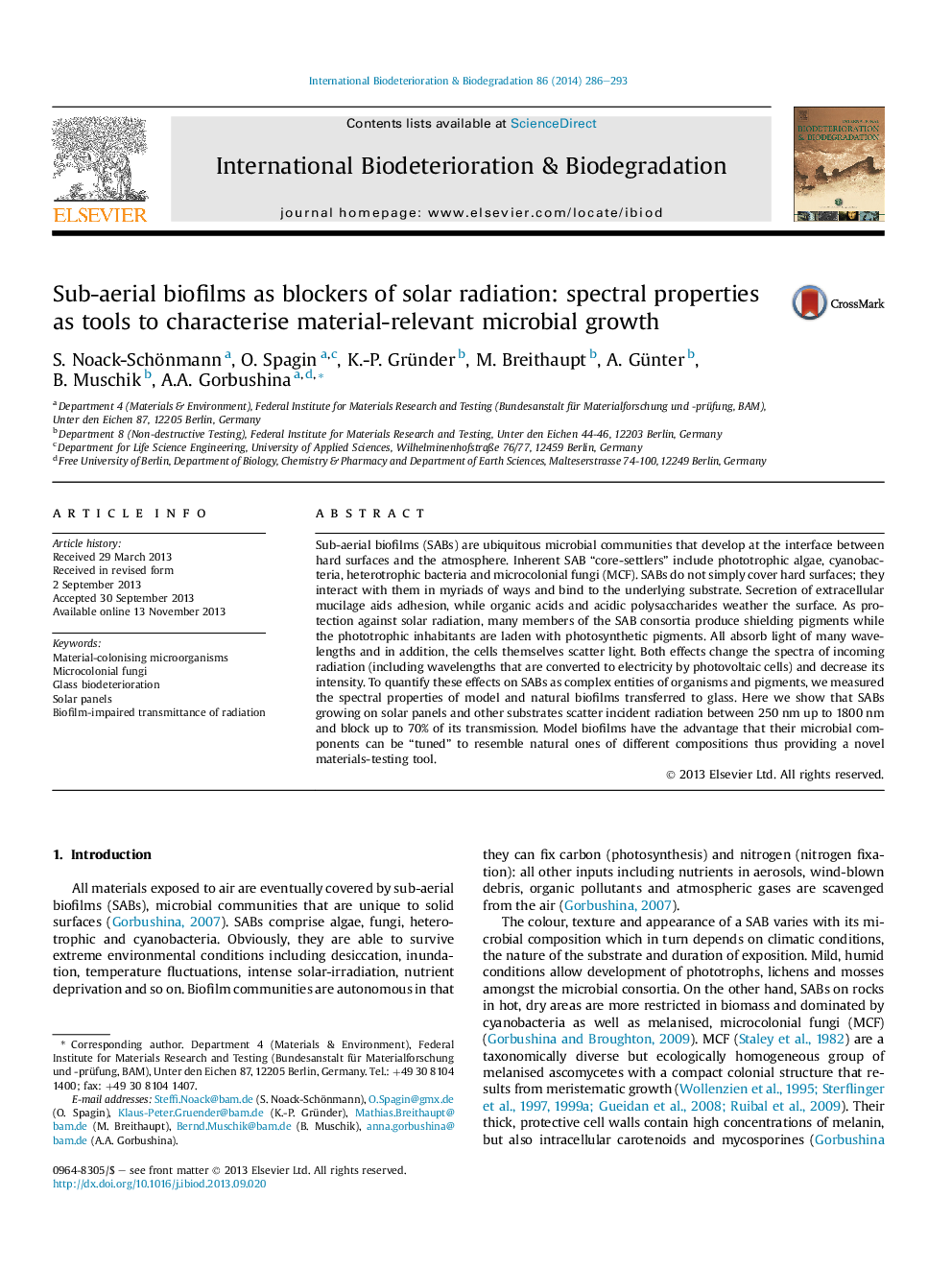| کد مقاله | کد نشریه | سال انتشار | مقاله انگلیسی | نسخه تمام متن |
|---|---|---|---|---|
| 4364814 | 1301725 | 2014 | 8 صفحه PDF | دانلود رایگان |
• Ubiquitous sub-aerial biofilms (SABs) alter material performance.
• SABs harvest 40–60% of incident solar radiation in the 300–1800 nm range.
• Conversion of solar radiation into electricity is thus impacted by SABs.
• Absorbance of specific wavelengths is related to the SAB community composition.
• Spectral properties of laboratory SABs can be "tuned" to mimic natural biofilms.
Sub-aerial biofilms (SABs) are ubiquitous microbial communities that develop at the interface between hard surfaces and the atmosphere. Inherent SAB “core-settlers” include phototrophic algae, cyanobacteria, heterotrophic bacteria and microcolonial fungi (MCF). SABs do not simply cover hard surfaces; they interact with them in myriads of ways and bind to the underlying substrate. Secretion of extracellular mucilage aids adhesion, while organic acids and acidic polysaccharides weather the surface. As protection against solar radiation, many members of the SAB consortia produce shielding pigments while the phototrophic inhabitants are laden with photosynthetic pigments. All absorb light of many wavelengths and in addition, the cells themselves scatter light. Both effects change the spectra of incoming radiation (including wavelengths that are converted to electricity by photovoltaic cells) and decrease its intensity. To quantify these effects on SABs as complex entities of organisms and pigments, we measured the spectral properties of model and natural biofilms transferred to glass. Here we show that SABs growing on solar panels and other substrates scatter incident radiation between 250 nm up to 1800 nm and block up to 70% of its transmission. Model biofilms have the advantage that their microbial components can be “tuned” to resemble natural ones of different compositions thus providing a novel materials-testing tool.
Journal: International Biodeterioration & Biodegradation - Volume 86, Part C, January 2014, Pages 286–293
